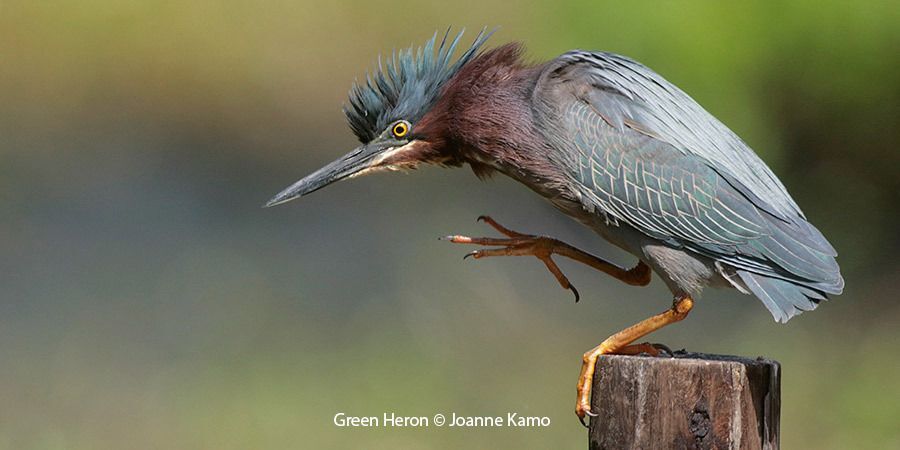
© Wayne Nicholas
Green Heron
Butorides virescens
Family: (Ardeidae) Herons, Egrets and Bitterns
Preferred Habitat: Woodland streams, ponds, marshes
Seasonal Occurrence: Abundant March through October; occasional in winter
Profile by Steven Garcia: The Green Heron is an incredibly distinctive member of the North American heron tribe. Small and stocky, the Green Heron measures 16.1-18.1 inches in length, 8.5 oz in weight, and a wingspan of 25.2-26.8 inches. This little heron is the second smallest Heron species in the United States, bested by the equally interesting Least Bittern.
The Green Heron has distinctive field marks such as a dark rufous chest and neck, deep green back, and bright orange legs. Juveniles have a muted appearance, being browner overall with pale streaking on the neck and speckling on the wings. A resident to medium-range migrant, the Green Heron will reside along the Texas coast year round, with east Texas lands generally occupied by populations during the breeding season (spring-summer), south west Texas occupied during the non-breeding season (fall-winter), and northwest Texas visited by migrating individuals.
The Green Heron takes advantage of their small size by hunting in small freshwater wetlands, ponds, and stream-sides with thick vegetation at their margins, ensuring ample cover for their safety and stealth. This solitary and secretive Heron likes to stand motionless by the edge of the water, posed horizontally with body lowered. It waits to thrust its bill at any unsuspecting prey swimming by. Although fish make up a majority of the unsuspecting prey, the Green Heron is not picky, using crustaceans, aquatic insects, amphibians, snakes, and rodents as food sources when the opportunity arises.
As one of the few bird species to use tools, the Green Heron will attract curious prey with different forms of bait such as twigs, feathers, insects, or leaves. Despite the fact that the Green Heron prefers the stop-and-wait hunting strategy, they occasionally dive for deep-water prey, aided by the webbing between their middle and outer toes.
-
Cornell Lab of Ornithology
-
Bird Guide
-
Bird Library
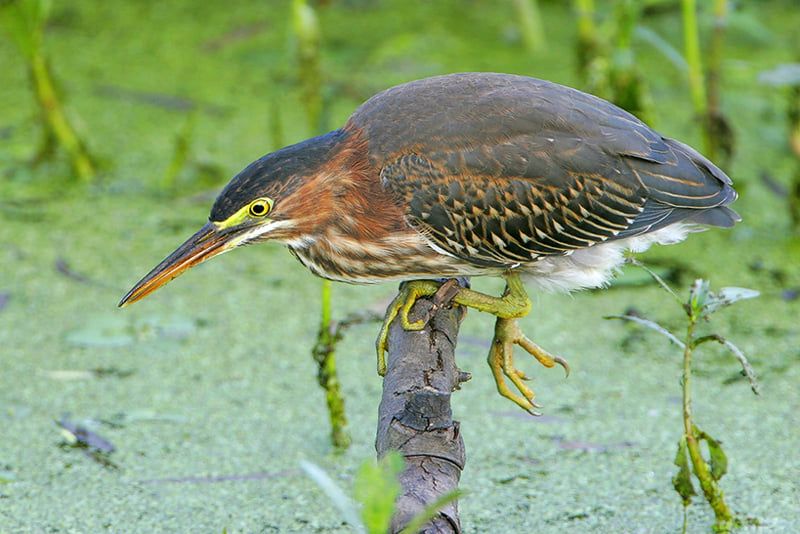
© Greg Lavaty, www.texastargetbirds.com
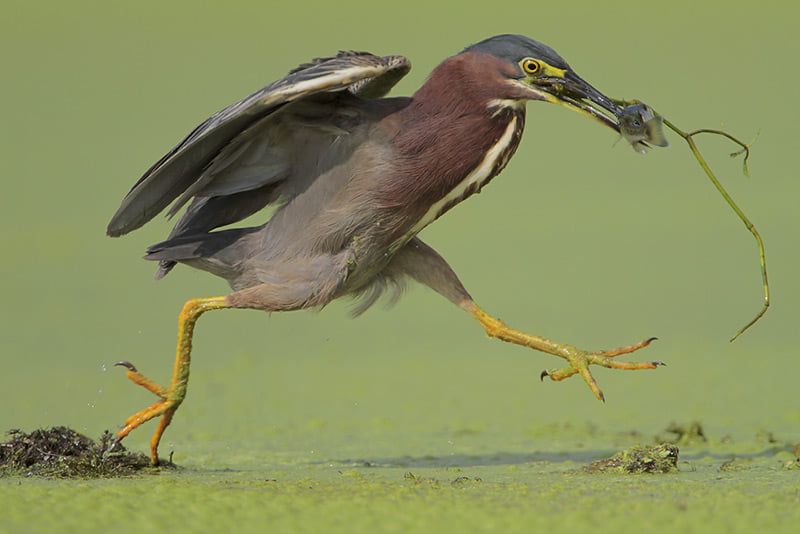
© Greg Lavaty, www.texastargetbirds.com
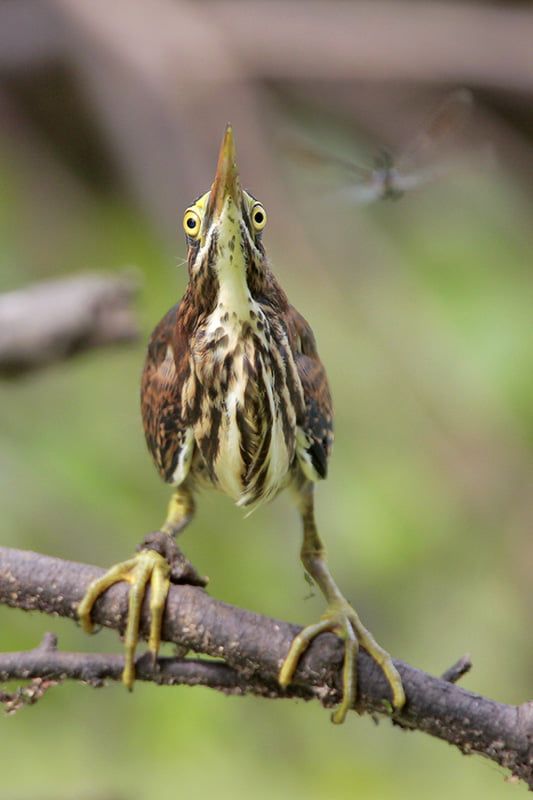
© Greg Lavaty, www.texastargetbirds.com
Profile by Aidan Healey: What do you mean, I’m short?
The Green Heron is one of the smallest resident members of the heron family in the Houston area. Full-size Green Herons are approximately 18 inches (45 cm) from beak to tail, which means they are comparable in size to the familiar American Crow. Additionally, Green Herons often hold their necks tucked in, which gives them a crouched appearance and makes them appear even shorter at first glance.
Green Herons have dark greenish-gray bodies and deep reddish-brown necks and faces, with dark greenish feather tufts on top of their heads. Adult birds have bright yellow legs, which turn more strikingly orange during the summer breeding season. Young Green Herons are generally lighter colored than adults, and they can be easily identified by the whitish streaking on the front side of their necks.
Green Herons can be found in forested wetlands and marshy areas with dense vegetation. They are usually solitary; though young birds often follow their parents for a few weeks after they fledge from their nests. When feeding, Green Herons will perch rather horizontally above the water, ready to strike at fish that swim within reach. While fish are their primary prey, they will feed on crayfish, frogs, snakes, and insects as well.
Profile by Nick Minnich: The Green Heron is often referred to as “daggerlike,” a perfect tool in the hunt for fish and amphibians. Green Herons are a short, compact heron who often prefer to stand on water’s edge vegetation as opposed to wading in the water like other members of its Ardeidae family. Green Herons tend to favor small fish like minnows, perch, and even goldfish as well as varying species of crustaceans, amphibians, reptiles, rodents, and other critters when the opportunity arises. As the longer-legged herons wade further into deeper water, Green Herons are almost always observed hunting in the shallows of marshes and swamps, with the potential to also plunge on prey in deeper water from above. Interestingly enough, this species has been known to use other foraging techniques like luring fish with twigs, bread crusts, or small insects, before piercing their prey with a quick strike.
Unlike other herons, Green Herons are much more solitary and mostly develop territories away from other species and individuals, unlike the colonial breeding herons found at rookeries across the Texas coast (e.g., Smith Oaks Bird Sanctuary). Courtship involves outstretched necks, the snapping of bills, exaggerated flapping of wings, and loud, enthusiastic calls. During the breeding season, the male will begin constructing the nest in order to establish territory, and then pass on nest-building responsibility after finding a responsive mate. Many obligate and facultative wetland species of tree are suitable for nest-building, and the structure can range from ground level to around 25-30 ft suspended. Male Green Herons will also occasionally select previously used nest sites of smaller herons and egrets. Clutch size ranges from 3-5 eggs of a pale blue color, resembling Great/Snowy Egret eggs but only about 1.5 inches long and 1 inch in width.
At first glance or with uncooperative lighting, Green Herons may resemble Least Bitterns, especially due to a resembling general impression of size and shape of the two species. Green Herons, however, have an overall bluish-green plumage on their back and wings as opposed to a Least Bittern’s blackish-green back and crown. Additionally, Least Bitterns have a striped straw-colored neck while Green Herons have a chestnut-colored neck. Even in juvenile plumage, Green Herons possess their greenish plumage and are overall a larger bird then Least Bitterns.
While some individuals will migrate through Texas to the eastern extent of their range on the Atlantic Coast or the western extent in California, Green Herons are a year round species on the Gulf Coast. Those wishing to observe Green Herons may find fortune at our High Island sanctuaries with a careful eye in and around our wetlands and ponds. Green Herons are often found in shallow water, concealed vegetation, and on banks. Their harsh “skeow” call is also a great indicator.
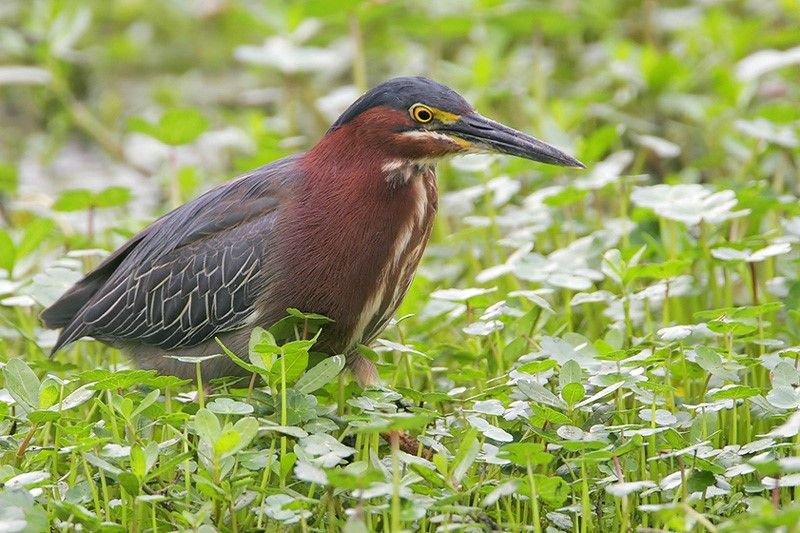
© Greg Lavaty, www.texastargetbirds.com
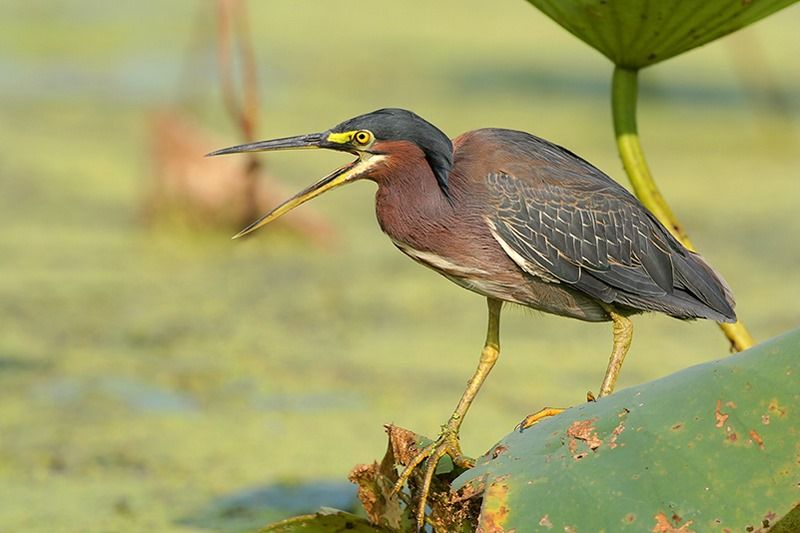
© Greg Lavaty, www.texastargetbirds.com
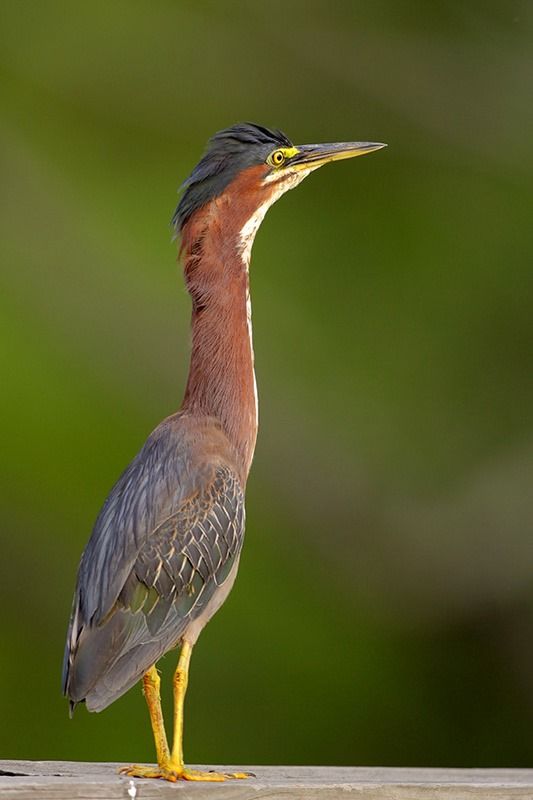
© Greg Lavaty, www.texastargetbirds.com

